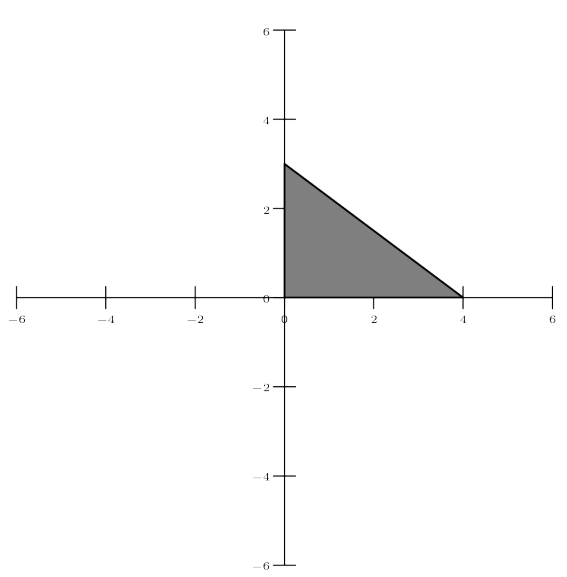2020 AMC 10 A
Complete problem set with solutions and individual problem pages
Let be the triangle in the coordinate plane with vertices , and . Consider the following five isometries (rigid transformations) of the plane: rotations of , and counterclockwise around the origin, reflection across the -axis, and reflection across the -axis. How many of the sequences of three of these transformations (not necessarily distinct) will return to its original position? (For example, a rotation, followed by a reflection across the -axis, followed by a reflection across the -axis will return to its original position, but a rotation, followed by a reflection across the -axis, followed by another reflection across the -axis will not return to its original position.)
- A.
- B.
- C.
- D.
- E.

Solution 1:
First, any combination of motions we can make must reflect an even number of times. This is because every time we reflect , it changes orientation. Once has been flipped once, no combination of rotations will put it back in place because it is the mirror image; however, flipping it again changes it back to the original orientation. Since we are only allowed 3 transformations and an even number of them must be reflections, we either reflect times or 2 times.
Case 1: 0 reflections on In this case, we must use 3 rotations to return to its original position. Notice that our set of rotations, , contains every multiple of except for . We can start with any two rotations in and there must be exactly one such that we can use the three rotations . That way, the composition of rotations yields a full rotation. For example, if , then , so and the rotations yields a full rotation. The only case in which this fails is when would have to equal . This happens when namely, , or . However, we can simply subtract these three cases from the total. Selecting yields choices, and with that fail, we are left with combinations for case 1 .
Case 2: 2 reflections on In this case, we first eliminate the possibility of having two of the same reflection. Since two reflections across the -axis maps back to itself, inserting a rotation before, between, or after these two reflections would change 's final location, meaning that any combination involving two reflections across the -axis would not map back to itself. The same applies to two reflections across the -axis. Therefore, we must use one reflection about the -axis, one reflection about the -axis, and one rotation. Since a reflection about the -axis changes the sign of the component, a reflection about the -axis changes the sign of the component, and a rotation changes both signs, these three transformation composed (in any order) will suffice. It is therefore only a question of arranging the three, giving us combinations for case 2 . Combining both cases we get (A) 12
Solution 2(Rewording solution 1): As in the previous solution, note that we must have either or reflections because of orientation since reflection changes orientation that is impossible to fix by rotation. We also know we can't have the same reflection twice, since that would give a net of no change and would require an identity rotation. Suppose there are no reflections. Denote as as , and as , just for simplification purposes. We want a combination of of these that will sum to either or and is impossible since the minimum is and the max is 9). can be achieved with any permutation of and can be achieved with any permutation of . This case can be done in ways. Suppose there are two reflections. As noted already, they must be different, and as a result will take the triangle to the opposite side of the origin if we don't do any rotation. We have rotation left that we can do though, and the only one that will return to the original position is , which is AKA reflection across origin. Therefore, since all transformations are distinct. The three transformations can be applied anywhere since they are commutative(think quadrants). This gives 6 ways.
